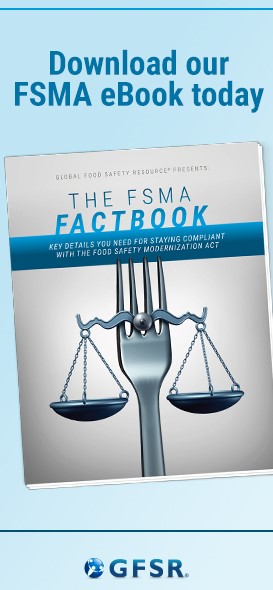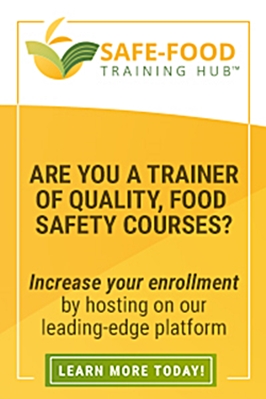Category archive for ‘Regulatory Compliance’
Capacity Building and Legislation Are Key to Food Safety in Emerging Nations
By Lauren Solar The Foreign Supplier Verification Rule that the US Food and Drug Administration has introduced recently as part of the Food Safety Modernization Act (FSMA) now puts the onus for ensuring food safety in emerging nations into the hands of first-world food retailers and manufacturers who wish to import into the United States. […]
Global Cooperation Needed to Ensure Harmonized Pesticide Levels
By Caleigh Irwin In a world where global food supply chains are deeply intertwined, there is one issue that has a huge impact on agriculturally-related food safety and trade in North America and around the world: the Maximum Residue Limits (MRLs) of pesticides. MRLs are determined for the import and export of all food and […]
The Three Biggest Threats in the Global Food Chain: Provenance, Adulteration & Compliance
By J. Marcelo Gomez and John G. Keogh Consumers are increasingly scrutinizing the provenance and authenticity of food, demanding more transparency and food safety compliance. And for good reason: food fraud is currently estimated to have a dollar value of USD $49 billion according to the Grocery Manufacturing Association (GMA). Food fraud is serious business […]
The Latent Loophole: Is it Time to Regulate Sugar and Salt Additives?
By Dr. Suzanne Osborne It’s not uncommon in North America for a toddler to take in 20 pounds of sugar a year from their yoghurt consumption alone. That’s the weight of a small dog. Sure enough, sugar is added to this healthy food product. In fact, finding packaged food without added sugar and salt is […]
Can Agile Systems Enhance Production and Compliance?
By Joan Martino Agility is the ability to move quickly and easily. For food producers, this means optimizing production, increasing product variety, and keeping costs low. The “Agile” concept originated in 2001 when 17 brilliant minds were seeking more effective ways to develop software and manage data. They proclaimed this Manifesto for Agile Software Development: […]
How to Increase the Value of Internal Audits
By Brita Ball External food safety audits can seem like a necessary evil, and internal audits a burden. But what if there’s another way to look at them? What if aligning internal food safety audits with broader business goals will transform audits into powerful mechanisms for improvement? Audits assess the effectiveness of a food safety […]
Air Management Critical for Safe Food Production
By Jaan Koel Air as an ingredient in food? Some would say “absolutely it is!” In fact, one stream of thought promotes the idea that air, like every raw material, additive, spice, and even food packaging, should be considered an ingredient in its own right, and subject to just as much care and concern as […]
The Three Most Vulnerable Points in Your Supply Chain: Part Two: The Manufacturing Process
By Ann-Marie Beall This is Part Two of a Three-Part Series on Supply Chain Vulnerabilities. We invite you to read our previously-published blog on supply chain vulnerabilities relating to Raw Materials. A supply chain is a system for transforming natural resources, raw materials, and components into a finished product that is delivered to an end […]
Leveraging News Aggregator Tools to Maximize Compliance
By Sandra Gebauer Kelly News aggregator tools are an effective and automated way to receive early warnings about regulatory changes that may affect the compliance of your organization’s products. When used properly, news aggregators allow manufacturers to not only be alerted to updates on contaminants and additives, for example, but also to influence the regulation […]
Current Regulatory Challenges to Exporting to the European Union
By Francesco Montanari With a population of over 500 million consumers, the European Union (EU) represents today a highly attractive market for food business operators interested in international trade. Yet, from a regulatory perspective, accessing the EU market can be a challenging task for food companies that are located outside the EU. There are a […]


